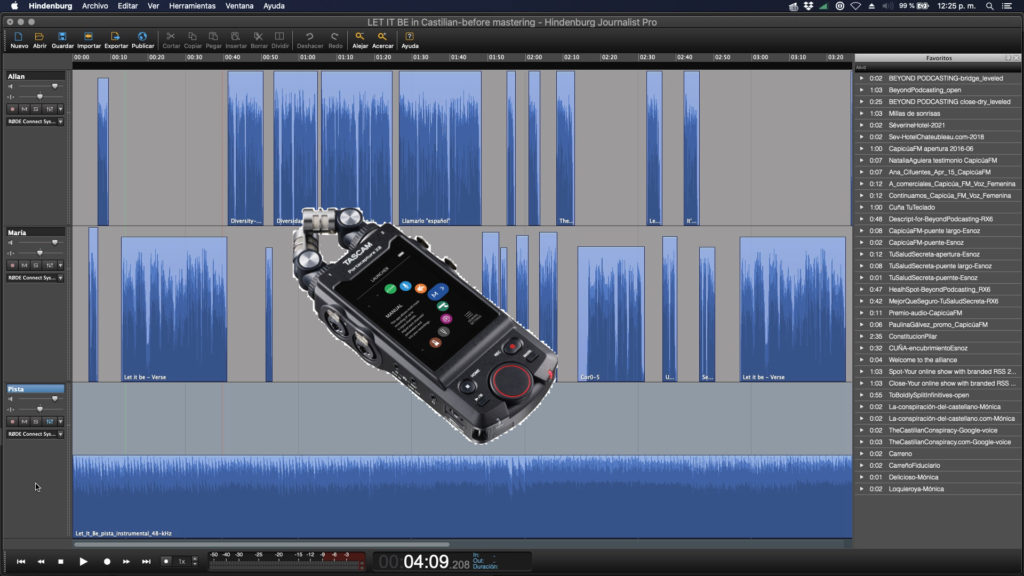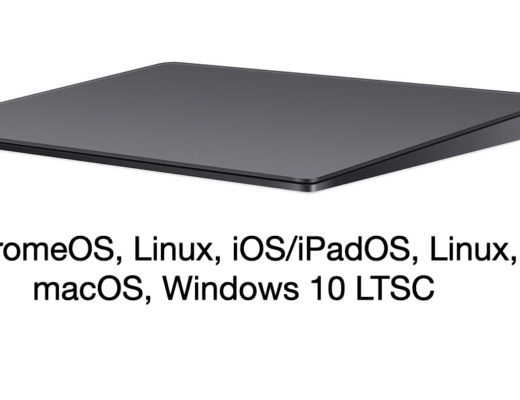Although 32-bit float recording has existed already for a few years, it was only recently that one of my local colleagues acquired such a recorder which has truly high resolution for 1528 dB dynamic range. I must clarify and emphasize that detail, since there are indeed recorders on the market which can deliver a file in the 32-bit float without having that 1528 dB dynamic range while processing the original audio (i.e. RØDE Wireless Go II which I recently reviewed). Since Francisco Javier Arbolí had just purchased the relatively inexpensive Tascam Portacapture X8 recorder, which indeed offers that high 1528 dB dynamic range (if desired) when set to the 32-bit float mode, it was time to check whether our favorite Hindenburg family of editors (whose members were recently rebranded as Hindenburg Lite, Hindenburg Pro and Hindenburg Narrator) were yet capable of importing such 32-bit floating files (since it wasn’t specifically documented)… and if so, whether they treated those high 1528 dB dynamic range as I hoped they would upon import. Ahead I’ll share the bottom line, workflow and best practices. I’ll also share Francisco Javier’s reason for wanting that feature in his new audio recorder. His reason may be the same or different from yours.
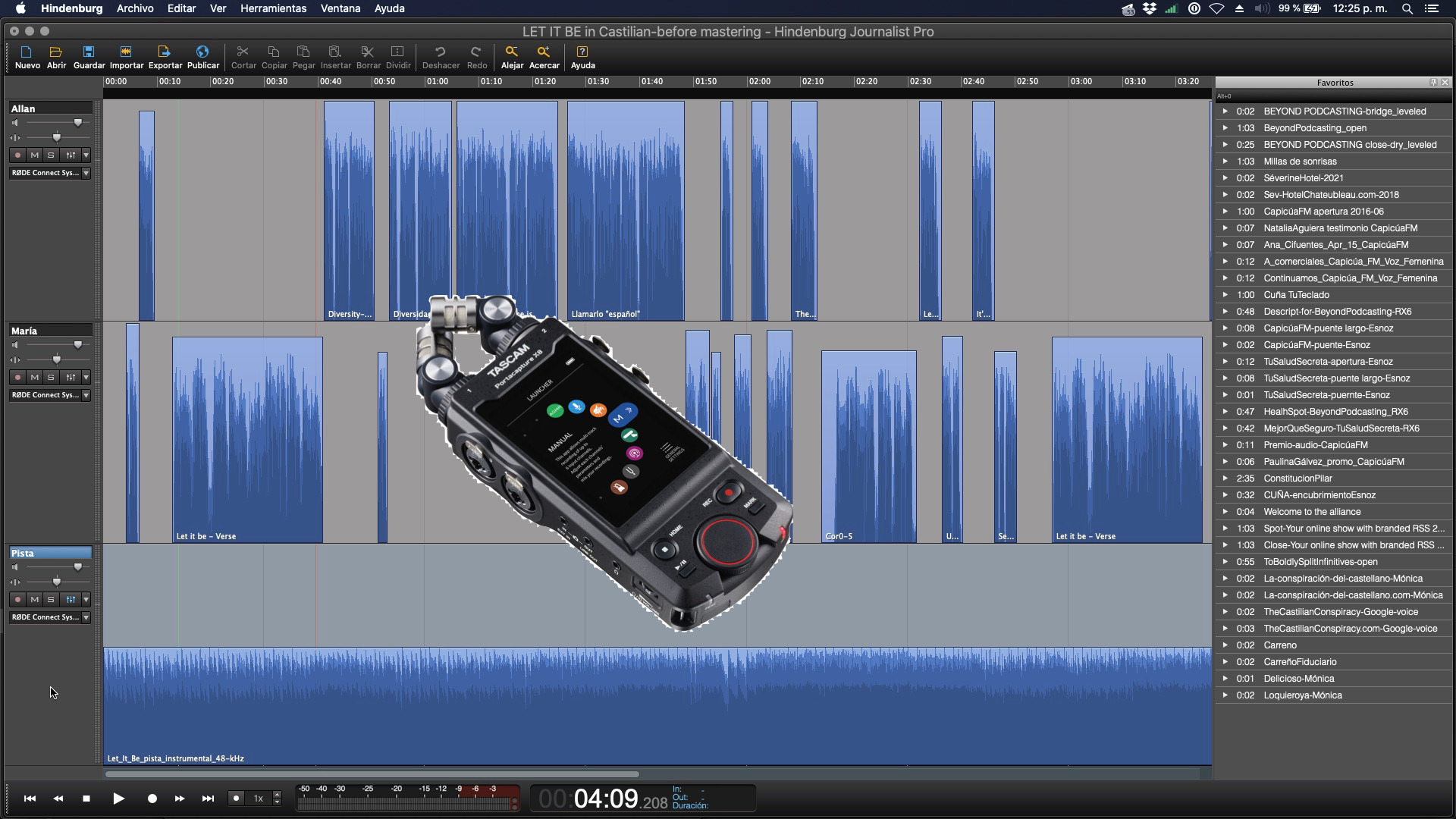
In this article:
- Recap about 16-bit integer and 24-bit integer audio
- What is 32-bit float recording/1528 dB dynamic range in a nutshell
- The two reasons you might want to record 32-bit float
- Recap about our 48 kHz audio sampling standard
- When you might ever want to record higher then 48 kHz audio sampling
- Hindenburg and importing 32-bit float files
- What do to if you receive a 32-bit float file recorded at higher than 48 kHz audio sampling
- Conclusions/The moral of the story (moraleja)
Recap about 16-bit and 24-bit integer audio
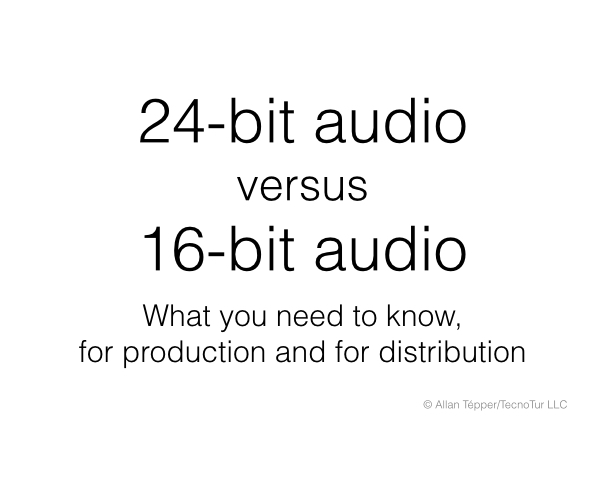
Here is a recap of my more detailed article from 2015, called Understanding 24-bit vs 16-bit audio production & distribution, illustrated above.
Audio resolution is measured in bits, not in Hz, Herz, or kHz. This audio resolution is sometimes expressed as bit depth. As you may recall from one of my prior articles, an LCD video monitor with a true 10-bit (30-bit) panel offers up to 1,073,741,824 colors, while an LCD video monitor with an 8-bit (24-bit) LCD video monitor offers only up to 16,777,216 colors. Similarly, 24-bit audio can record 16,777,216 discreet values for loudness levels (or a dynamic range of 144 dB), versus 16-bit audio which can represent 65,536 discrete values for the loudness levels (or a dynamic range of 96 dB).
As you read in the introductory paragraph, a 32-bit float (not a 32-bit integer) audio file can record a dynamic range of 1528 dB dynamic range.
Many types of final delivery offer 16-bit audio or less. Even the CD Audio standard is 16-bit. Having said that, DVD-Audio, Blu-ray Disc, and DCP (Digital Cinema Package popularized by DCI, Digital Cinema Initiatives, LLC) can support up to 24 bit for final delivery. There is also a growing number of online music sources and services that offer 24-bit audio, including Acoustic Sounds, Amazon Music, Apple Music/iTunes, ATMA Classique, Blue Coast Records/Downloads NOW!, Bowers & Wilkins Society of Sound, The Classical Shop, HDtracks, iTrax, and Pristine Classical. But even if you are currently distributing your final content in a way that only supports 16-bit or lower resolution audio, there are still advantages to producing in 24-bit (or 32-bit float).
Recording the original file at 24-bit dynamic range (or higher) gives us more headroom for peaks so you don’t risk clipping and a greater separation between the recorded audio and the noise floor. When we readjust audio levels in post-production, there will be more latitude with less probability of artifacts, as long as our editing software supports it. Although recording 24-bit audio (or higher) definitely produces heavier files, they are nothing compared to the weight of our video files.
What is 32-bit float recording/1528 dB dynamic range in a nutshell
When you use a recorder which has truly high resolution for 1528 dB dynamic range and records at 32-bit float, you take all of the advantages from the prior section even further, even though you will likely never make a final delivery at that resolution in the near future. More likely, your final delivery will either be at 24-bit, 16-bit or lower.
Of course, if you are going to record this way, you must be prepared to know whether your audio editor (or audio/video editor) can properly import 32-bit float files with 1528 db dynamic range and can handle it properly. When i say that it should handle it properly, I mean that it does not immediately convert it to a lower resolution file blindly, but leaves it intact until you do something with it.
The two reasons you might want to record 32-bit float point/1528 dB dynamic range
Before I tell you why you might want to record 32-bit float, I should first clarify why you should not do it: You should not do it thinking that you can actually deliver it that way to the final consumer. Having stated that, here are the two reasons:
- You truly plan to record something which can truly contain so many levels of dynamic range and do not want to trust any limiter or compressor to handling it live on the fly (i.e. someone whispering right before an airplane takes off).
- Like my colleague Francisco Javier Arbolí who bought the Tascam Portacapture X8 recorder primarily to record human speech during field interviews, there are situations when you don’t want to concern yourself about setting audio levels while in the middle of conducting an interview… and do not trust how well a limiter or AGC (automatic gain control) may handle unexpected high or low levels, from a shout or loud laugh to a whisper.
Either way, you are delaying the dynamic compression until later (in post-production), at least while there is no practical final delivery of 32-bit float point/1528 dB dynamic range. In fact, for online radio and podcasts, for the final delivery, there are benefits to have much less dynamic range in the final product than can be delivered with 16-bit, so listeners won’t have to ride the volume know when listening in a noisy environment, like in a car on the highway or when walking in a noisy place like a city sidewalk. The idea of recording 32-bit float point/1528 dB dynamic range is to delay dynamic compression and/or normalization until later, without potentially damaging the original recording due to clipping or aggressive treatment from a limiter or compressor built into a recorder.
Recap about our 48 kHz standard
Our absolute standard for audio for video is 48 kHz. Although it could be higher (i.e. 96 kHz) that is very rarely used for final delivery and rarely justifiable.
The now nearly distinct audio CD (Compact Disk) (at least in the United States) continues to haunt us today since it was made to be done at 44.1 kHz. As a result, for audio podcasting, both 44.1 kHz and 48 kHz are acceptable. I only recommend 48 kHz for production and distribution of podcasts since any audio podcast should be compatible with video promotion or video simulcast without ever having to upsample the audio.
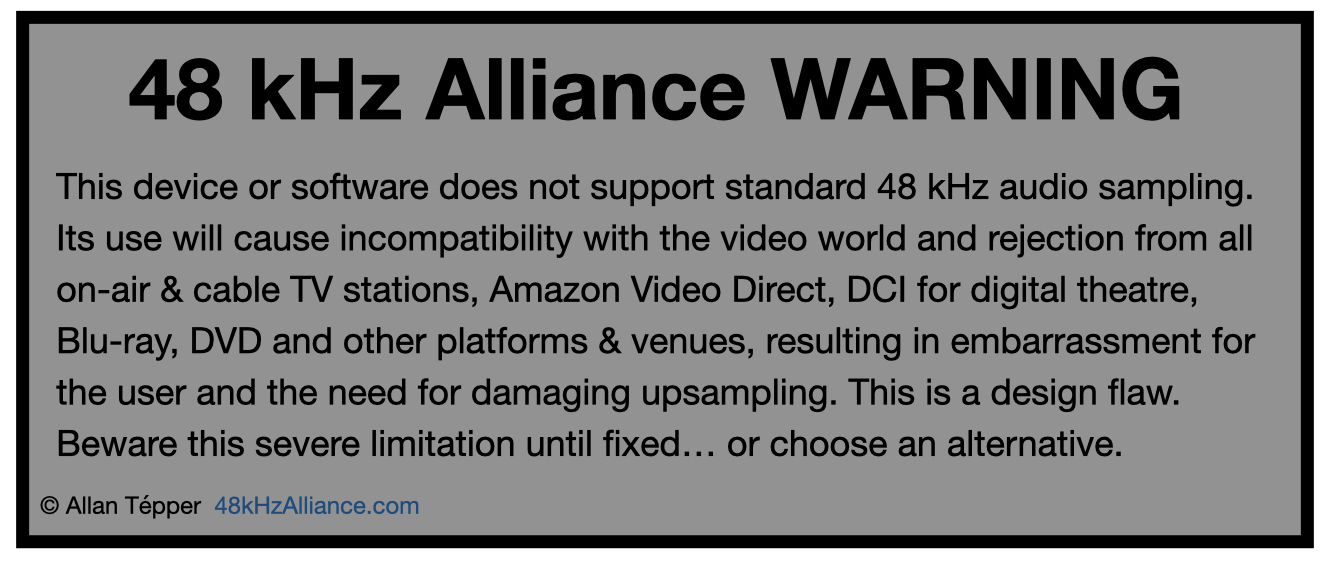
For more information, visit 48 kHz Alliance at 48kHzAlliance.com and this article about the 48 kHz Alliance Warning Label introduction, illustrated above. All of my podcasts and all of the podcasters currently listed among the testimonials at CombinedHosting.com —and many more— also produce and distribute at 48 kHz, with all of the associated advantages.
Fortunately, the Tascam Portacapture X8 indeed offers 48 kHz audio sampling and (according to Francisco Javier Arbolí), that was the default from the factory. I thank Tascam for that!
When you might ever want to record higher then 48 kHz audio sampling
The only time you might ever record a human voice at higher than 48 kHz audio sampling is if you ever need to have slow-motion audio without damaging artifacts. Most slow motion is video-only without the accompanying slow-motion audio. (It often has the real-time audio or different audio.) But if and when you really need slow-motion audio, then it makes sense to record at a higher audio sampling frequency, as follows:
- For up to 1/2 slow motion, record at 96 kHz
- For up to 1/4 slow motion, record at 192 kHz
Then in post-production, you can slow them up to that amount in a 48 kHz project without ever having loss thanks to oversampling in the original.
I’ll restate that requiring audio slow motion is rare, and it’s the only time I justify recording a human voice a a sampling rate higher than 48 kHz.
Hindenburg and importing 32-bit float files//1528 dB dynamic range
When I first tested a 48 kHz/32-bit float//1528 dB dynamic range in Hindenburg Pro it just accepted it. However, i couldn’t be sure whether Hindenburg Pro had reconverted it to 24-bit upon import. Since I couldn’t find any documentation about this, I had to ask our friends at Hindenburg in Denmark. I was happy with the response. If the 32-bit float file is 48 kHz/32-bit float//1528 dB dynamic range, Hindenburg will leave it alone until you manipulate it or export it. Considering that I know that we can’t make any final delivery higher than 24-bit, I didn’t even ask about the export options, since that I already knew and is even revealed in the menu when exporting (with formats that allow it).
In addition, they responded:
You can verify if you select “Properties” on a region. It should say the file is 32-bit.
The exception to this “hands-off” compatibility would be if a raw file were sampled at a higher rate than 48 kHz, as explained both in the prior and upcoming sections. This is because Hindenburg maxes out at 48 kHz, which makes total sense to me.
What do to if you receive a 32-bit float file recorded at higher than 48 kHz audio sampling
Whether it was intentional or a mistake done by someone who made the recording, if you actually receive a 32-bit float file recorded at higher than 48 kHz audio sampling rate and you plan to edit the material with Hindenburg, I recommend the following workflow:
- If you need slow motion audio with that material, perform the slow motion audio within some program that supports both this 32-bit float resolution and the appropriate sampling rate over 48 kHz, while it’s still in 32-bit float. Then perform any desired normalization or compression in that other program and export it as a 48 kHz/24-bit WAV file for use in Hindenburg.
- If you don’t need slow motion audio, perform any desired normalization or compression in that other program that supports both this 32-bit float resolution and sampling rate over 48 kHz, while it’s still in 32-bit float and then export it as a 48 kHz/24-bit WAV file for use in Hindenburg.
If you don’t own any program capable of this, then either try to do it with a trial of version of one that does or subcontract the above to someone who has one. Visit this continually updated page from Sound Devices to determine which audio and video programs support these formats.
Conclusions/The moral of the story (moraleja)
The moral of the story (moraleja) is:
If you choose to record 32-bit floating point with 1528 dB dynamic range for any of the justifiable reasons, do so at 48 kHz for total and direct compatibility with Hindenburg. Only use a higher sampling frequency than 48 kHz if you plan to perform audio slow motion later. If so, follow the procedure indicated in this article to convert the file before using it in Hindenburg.
(Re-)Subscribe for upcoming articles, reviews, radio shows, books and seminars/webinars
Stand by for upcoming articles, reviews, books and courses by subscribing to my bulletins.
In English:
- Email bulletins, bulletins.AllanTepper.com
- In Telegram, t.me/TecnoTurBulletins
- Twitter (bilingual), AllanLTepper
En castellano:
- Boletines por correo electrónico, boletines.AllanTepper.com
- En Telegram, t.me/boletinesdeAllan
- Twitter (bilingüe), AllanLTepper
Most of my current books are at books.AllanTepper.com, and also visit AllanTepper.com and radio.AllanTepper.com.
FTC disclosure
Some of the other manufacturers listed above have contracted Tépper and/or TecnoTur LLC to carry out consulting and/or translations/localizations/transcreations. Many of the manufacturers listed above have sent Allan Tépper review units, including Blackmagic, Sound Devices and Tascam (although not the Portacapture X8 so far). Some software companies listed above have sent Allan Tépper NFR copies for review, including Hindenburg. So far, none of the manufacturers listed above is/are sponsors of the TecnoTur, BeyondPodcasting, CapicúaFM , SpeakCastilian or TuSaludSecreta programs, although they are welcome to do so, and some are, may be (or may have been) sponsors of ProVideo Coalition magazine. Some links to third parties listed in this article and/or on this web page may indirectly benefit TecnoTur LLC via affiliate programs. Allan Tépper’s opinions are his own. Allan Tépper is not liable for misuse or misunderstanding of information he shares.

Filmtools
Filmmakers go-to destination for pre-production, production & post production equipment!
Shop Now